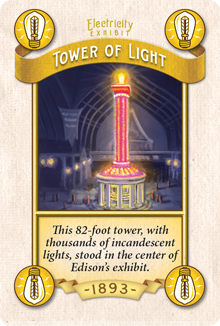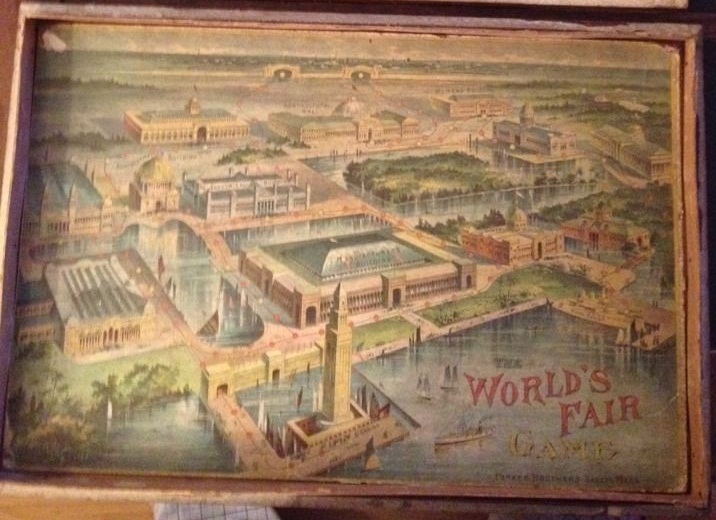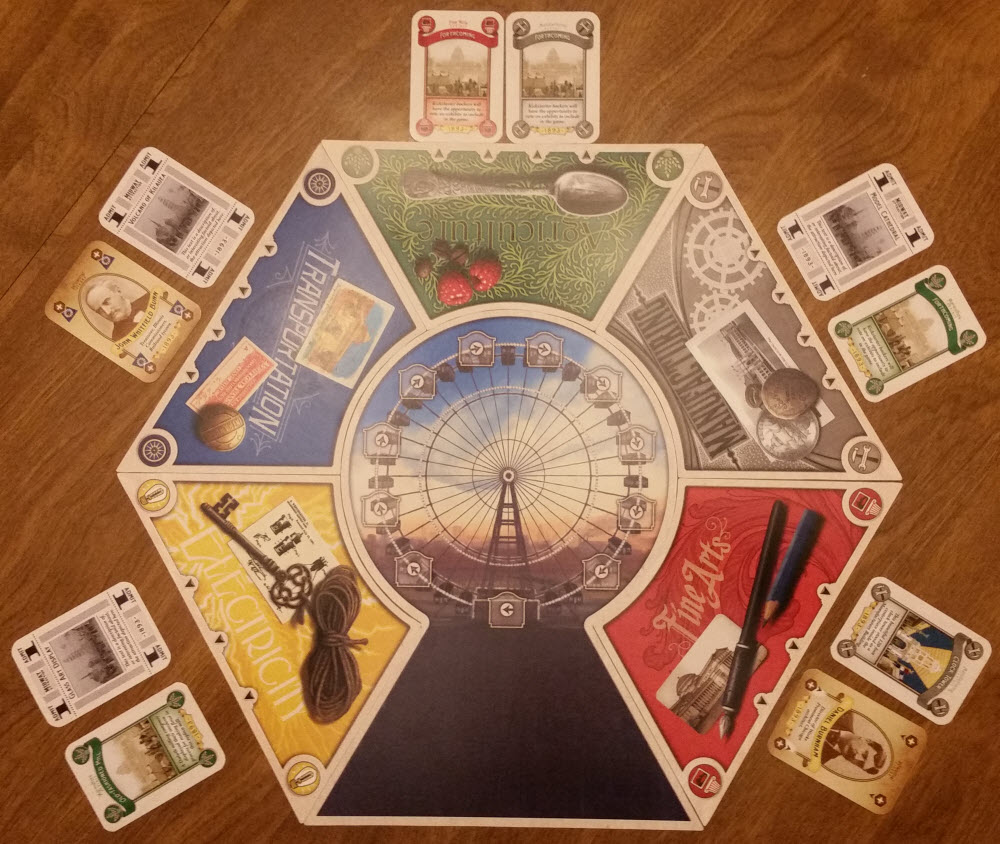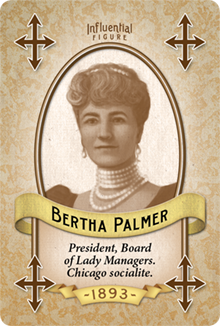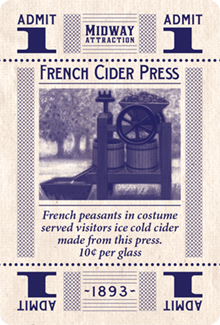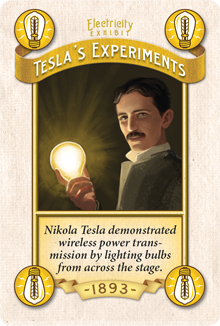We live in an era where a large portion of the world operates with a constant exchange of ideas and information. You can read this article, discuss it, dissect it, share it, reflect on it, and cherish it (as you should) from almost any Internet-enabled device on the planet. And we’re increasingly taking that amazing fact for granted. There is no longer the requirement that we must wait for a local publication for current events or for national and international galas to learn of the progress of mankind.
Yet there was a time not all that long ago where the world hosted – and was noted for – massive and lengthy global expositions to share and celebrate news and ideas with one another. There were Olympics-sized events that lasted for months. These were the World’s Fairs.
Among the most famous of these was the World’s Fair: Columbian Exposition. Hosted in Chicago in 1893, this fair come into prominence during an unusual confluence of, technological, economic, cultural, and ideological changes. Its theme was to to honor the 400th anniversary of the arrival of Christopher Columbus to the Americas, but it went far beyond that.
Between its whitewashed buildings and being the first fair lit by electricity, this World’s Fair was deemed The White City, a testament to progress and American Exceptionalism as the country approached a new century and the Gilded Age carried on. With pavilions showcasing dozens of nations and every U.S. state and territory, 27 million people were treated to the fair’s untold unique experiences over its six month span, including:
- Authentic replicas of the Niña, Pinta, and Santa Maria from Spain as well as a Viking ship from Norway
- Hula dancers from Hawaii, the famous belly dancer Little Egypt, and performances by a young Ehrich Weiss – later known as Harry Houdini
- The invention of the moving walkway, spray paint, Cracker Jacks, and the Ferris Wheel – which, like the Eiffel Tower before it, became a landmark symbol of the event
- Also, that little thing called electricity, complete with the ongoing and larger than life War of Currents between Edison’s DC-based General Electric and AC-based power by Westinghouse & Tesla
Yes, the World’s Fair of 1893 was an event for the history books, and by all accounts was truly a sight to behold. The scope of new marvels, new discoveries, and new ideas would have been as exciting as they were enlightening.
While few physical attributes remain of this momentous occasion, you now have the opportunity to relive a tiny part of it with World’s Fair 1893, the latest title by Foxtrot Games!
In this 2-4 player excursion into set collecting and minor area control, each player acts as one of the fair organizers looking to get as many of their suggested exhibits on display before the fair is fully underway. There’s naturally only so much time and space to showcase every new fandangled thing of the early 1890s, so your goal is to end up with the most influence over the show once opening ceremonies begin.
It’s sort of like real event planning. Only more fun.
The game begins with the formation of the fairgrounds. Unlike the planning and engineering that went into building the real deal, this game can be set up almost as quickly as a rigged carnival game. At the center of the game lies, quite fittingly, the epochal Ferris wheel of the Chicago fair. This underscores one of the game’s major selling points: although designed to deliberately have a light thematic touch, the game’s illustrations and graphic artwork bring to life an otherwise straightforward set collection game. Apart from solidifying its premise and being visually appealing, however, the Ferris wheel is also functional in that it tracks the game’s progress throughout each of the game’s mere three rounds.
Huddled around the Ferris wheel are the game’s five categories, each representing one of the many cornerstone ideas shown off in 1893: Agriculture, Electricity, Fine Arts, Manufacturing, and Transportation. At the beginning of the game these five areas are randomly placed around the central board. Sort of like this. Only, exactly like this:
Not only is this is useful by aiding the game’s replay value, but it’s also just a good sign from the administration that they’re not playing any favorites with how the events are planned out. The last thing you’d want is to start your fair off with a scandal.
An empty fairground is a sad fairground though, and so at the beginning of the game each area is populated with two cards from the deck. Then, once the turn order determined, players put their helpers to work by sending an initial Supporter or two to each area, depending on turn order and bonuses. From there on out, though, it’s all business.
On your turn, you first choose an area to add a Supporter to. Then, you pick up all of the cards in that area. Then you replenish a card to the area you picked cards up from, followed by the next two available areas. Each card in World’s Fair 1893 is either an Influential Figure, a Midway Ticket, or an Exhibit, and each affect your strategy differently over the course of each round.
Influential Figure cards represent various powerful and famous people that you can hobnob with at the fair. Influential Figures provide you extra Supporters when used, but since their time is limited, you are forced to use them the turn after you pick them up. Influential Figures can be quite helpful towards accumulating Supporters in specific areas, and part of the game’s worthwhile decision-making comes from having to decide which Figures to pick up and when. It turns out to be just as true then as it is now: it’s not what you know but who you know.
On the more leisurely side of the equation are Midway Tickets, representing the casual atmosphere of Chicago’s Midway park, which tended to be the more fun (and profitable) side of the World’s Fair. Each Midway Ticket you have at the end of round gives you points, and they can quickly add up. However, every time a Midway Ticket is collected, the game’s Ferris wheel track moves forward one space. Once the Ferris wheel makes one complete rotation, the round ends. Not only does this advance the game along in a thematically inventive way, but Midway Ticket collection also adds some marked tension as players are forced to gauge when exactly the round will come to an end. No one likes leaving the fair with things undone, after all.
Finally, there are Exhibits, which reflect the numerous real world spectacles found at the fair. In World’s Fair 1893, every Exhibit belongs to one of the five area categories. These cards become the items you desire to showcase at the fair, and once collected your goal is to get them approved at the various locations. Of course, this is easier said than done.
At the end of every round, players see how many points they’ll gain and how many Exhibits they can get approved by comparing who has the majority number of Supporters in each area. So hopefully all of your jockeying for Supporters earlier in the round will have paid off. For each category, the winner receives points and is allowed to turn in a set number of Exhibit cards of that type for matching category tokens.
It’s almost impossible to dominate every category though. Therefore, with limited time and resources, you’ll have to carefully balance which areas you want to fight for each round and which aren’t worth the effort. It is this jockeying for control where World’s Fair 1893 shines best, giving you an easy to follow mechanic while offering the flexibility to make calculating (and often difficult) choices in a scant 45 minute time span.
Afterwards, half of your Supporters in each area wander off into the crowd for a break, presumably to check out the fair’s new blue ribbon winning beer by the Pabst Brewing Company before the next round begins anew.*
After three rounds of fighting for influence and taking rides on the Ferris wheel, the fair’s preparations wrap up. This consists of turning in as many sets of different category tokens as you can for points and then seeing which of you truly knew how to run a world class operation.
With the banners streaming and the lights turned up, World’s Fair 1983 is ready to receive an audience. By carefully infusing elements of a unique setting into a concise but easy to learn set of mechanics, World’s Fair 1893 shrewdly sidesteps becoming another mildly skinned set collection game. Rather, with its dual emphasis on player decisions and keeping complexity to a minimum, 1893 bears all the markings of an ideal Gateway Plus Game in the making. It would be nice to see the game dive deeper into the theme it draws so much of its inspiration from, but it strikes a tonal balance between accessibility and mild strategic depth all the same. World’s Fair 1893 is not a hefty game, but don’t equate short with effortless here. With a solid foundation and the right setting, 1893 is an wonderful and flavorful example of elegance in simplicity. So if this sounds like a bully good time, then take a short walk over to the Kickstarter pavilion to see about an encore presentation or two. Cracker Jacks are extra.
*We’re seriously not making that one up. That’s literally how it got its name.
Photo Credits: World’s Fair 1893 cover and artwork by Foxtrot Games; Original World’s Fair game by BoardGameGeek.

